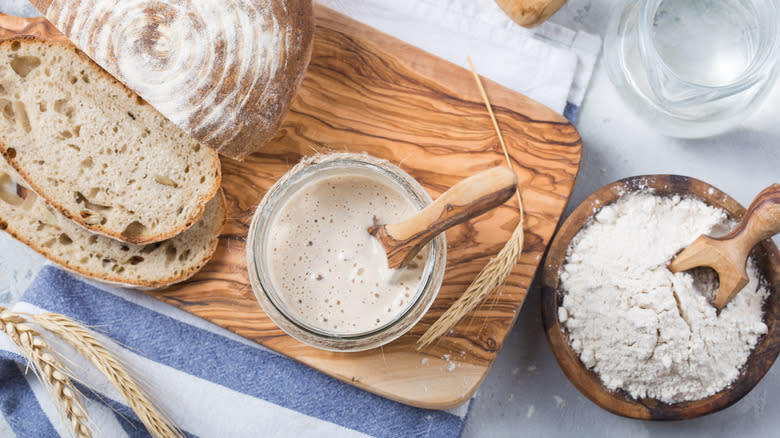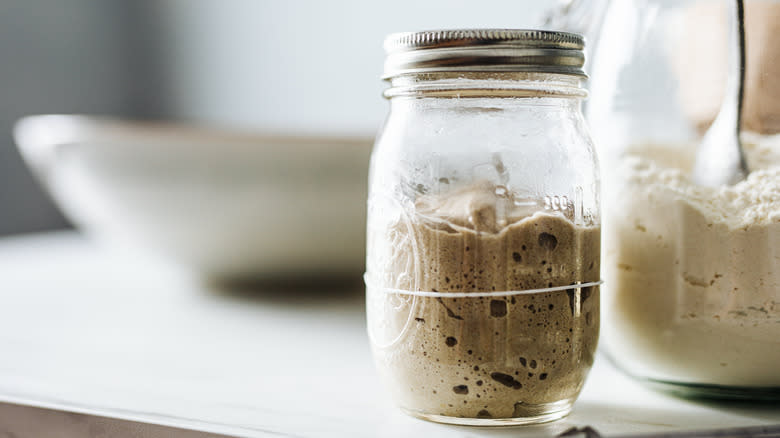What Makes Your Sourdough Starter A Living Thing?

Sometime during lockdown, droves of people took up the act of making bread. Although banana and naan were baked often, sourdough bread soon emerged as a top choice for new bread makers. While the process of making bread from scratch makes one feel like they own their bakery, sourdough starter is a living, though not quite breathing, thing that allows people to live out their childhood fantasy of being a scientist.
Sourdough bread has a delightful tang to it, as well as low gluten levels and a significant amount of protein. However, it's not just its flavor and nutrients that set it apart from other breads, but the way it's made. While traditional breads rely only on commercial yeast, sourdough starter contains a mix of flour and water. At first, it may not look like much, but that simple combination ferments with the help of additional flour and water, which must be added to the original batch. The starter will eventually begin to bubble -- it's here that you'll see the starter is alive, with chains of yeasts eating the sugars and starch in the flour.
As you feed the starter, bacteria from the air, your hands, the spoon, and the additional flour enter it. When they get into the starter, they're met with enzymes -- proteins that quicken a chemical reaction -- that are already in the flour. This chemical reaction allows microorganisms to grow and spread.
Read more: 23 Whole Foods Baked Goods, Ranked
How Often Does Sourdough Starter Need To Be Fed?

Like plants, pets, and yourself, a sourdough starter is a living thing that must be fed. Thankfully, it's not picky -- flour and water are all it needs to survive. With each feeding, a little bit of starter should be scraped away. Otherwise, the starter, which is fed every 12 to 24 hours, will grow too large. Plus, removing the top gives the rest of the starter better access to the food.
Within two weeks, your sourdough starter should be ready for baking. It may take a little longer, but doubling in size, growing thicker, and forming bubbles at the top are signs that your starter is ready to become bread. While it does require attention, don't be worried about killing your starter. It may start to get dark on top, but even this can be revived with more food and mixing. However, if it's begun to mold or turn pink or orange, it must be tossed.
When stored in the fridge, sourdough starter only needs to be fed once a week. From there, you can refresh your starter and add it to the dough to make fresh-baked sourdough bread or turn it into soft sourdough pretzels.
Read the original article on Tasting Table.

